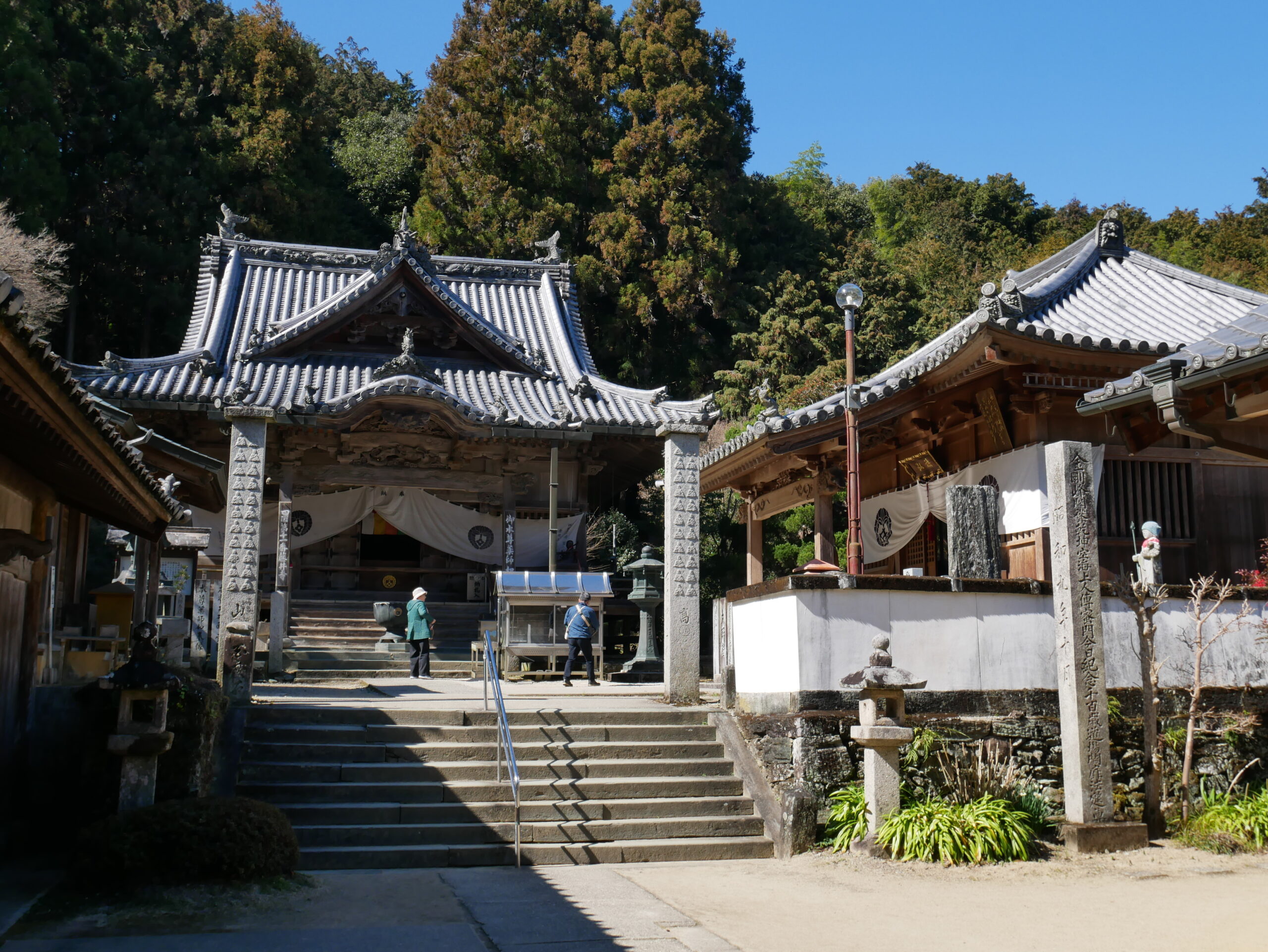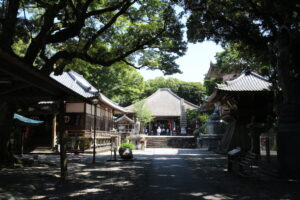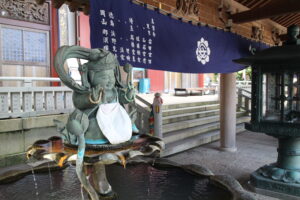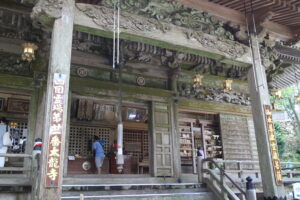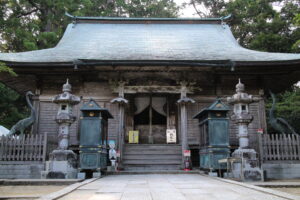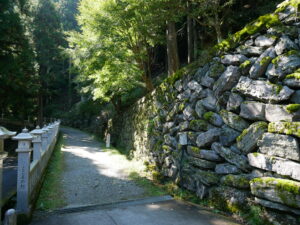Nestled at the foot of the lush southern mountains of the Yoshino River Valley, Fujii-dera marks the entrance to the first great challenge of the Shikoku Pilgrimage—the climb to Temple 12, Shosan-ji. Pilgrims often stay in the area around Fujii-dera on their second night of their journey in order to get an early start on the challenging hike the next day.
Fujii-dera’s Origins and History
Behind Fujii-dera in the middle of the forested stream stands a striking flat-topped boulder with a small shrine to Benzaiten atop it. Here, Kukai is said to have build an altar for the Goma fire-offering ritual and prayed for 17 days for the benefit of all beings. The temple developed around this sacred site. The temple was burnt in one of the many wars of the medieval period, and was reopened by a Zen monk in 1674, making it one of the very few Zen temples on the pilgrimage. This results in a slightly different aesthetic atmosphere inside the main hall; although the altar is richly inlaid with mother-of-pearl, you won’t find any of the many glittering ritual implements that characterize Shingon temples, the dominant sect on the pilgrimage. Read more about Japan’s Buddhist sects on Japan Guide.
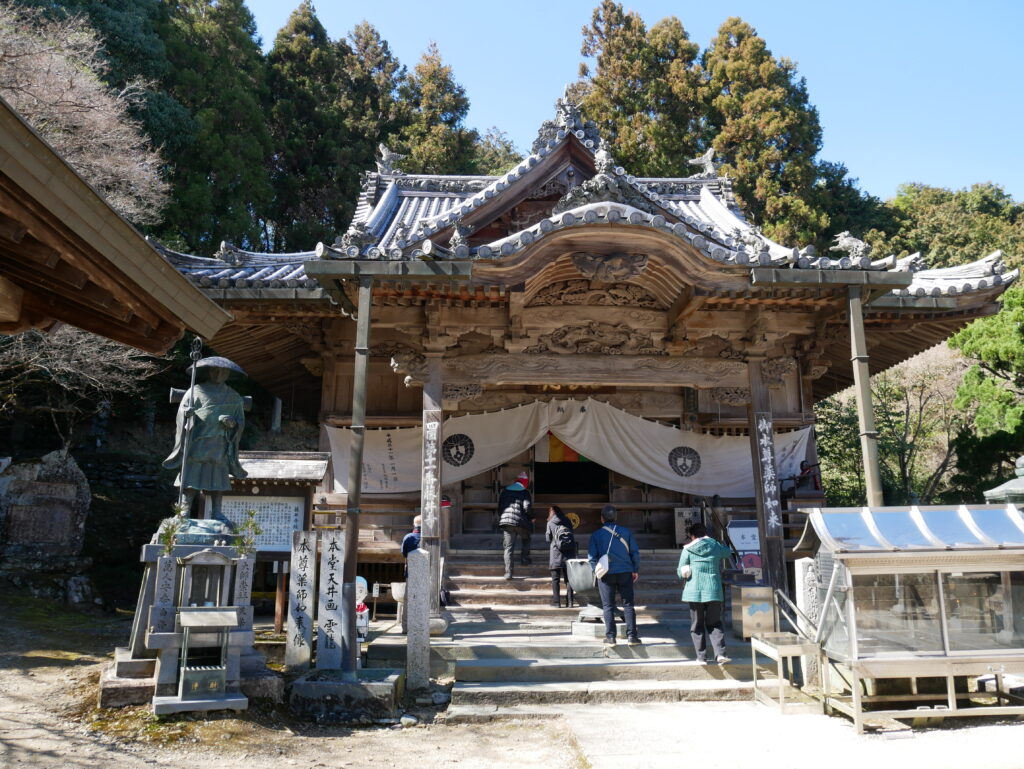
What to See at Fujii-dera
Just past Fujii-dera’s main gate you’ll find a grove of gnarled wisteria trees, said to have been planted by Kukai to ward off evil with their enchanting aroma, give the temple its name, “Wisteria-well Temple.” Its richly-carved main hall holds an exquisite statue of the Medicine Buddha, Yakushi Nyorai, dating to the 12th century, making it the oldest dateable main image of any Henro Temple (although temple legends claim their statues to be older). The ceiling of the main hall is painted with an impressive dragon. To the right of the main hall is the Daishi Hall, and to its left are a small hall dedicated to the deity Fudo and to Benzaiten, the Japanese incarnation of the Indic goddess of water and music Saraswati. Next to the Benzaiten chapel lies the trailhead to Temple 12, Shosan-ji. The first part of the trail follows a gurgling stream through the forest, and is lined with a miniature 88-temple pilgrimage. To dive deeper into the meaning of the Medicine Buddha, check out this article from the Buddhist magazine Lion’s Roar.
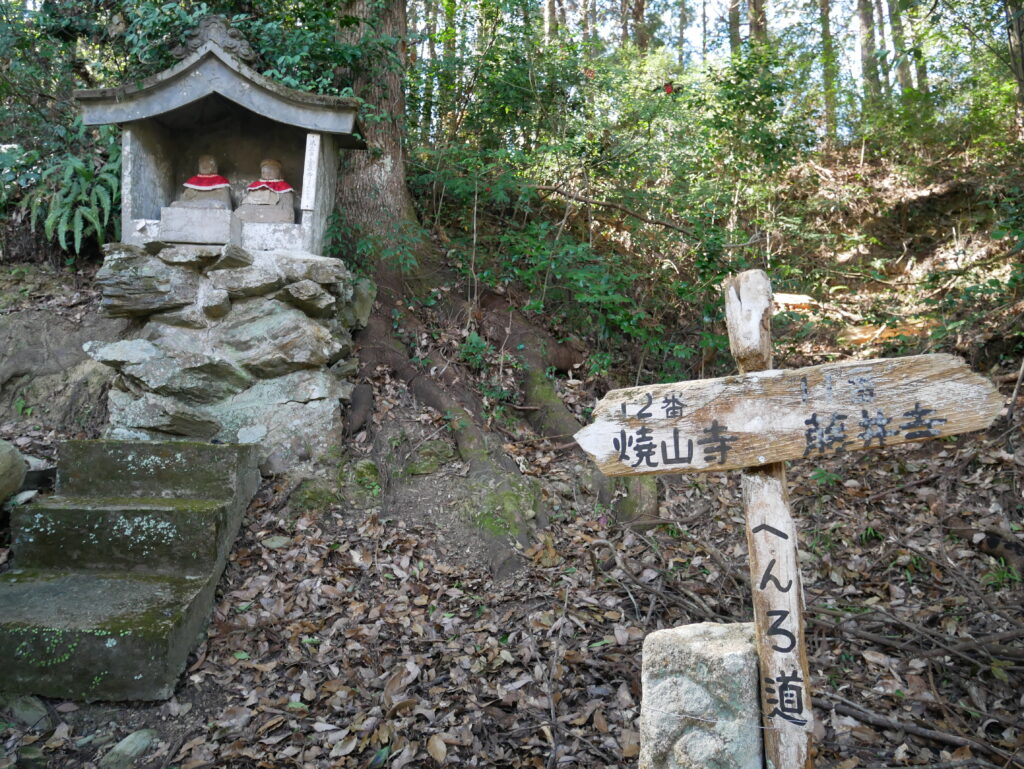
Start Strong with Shikoku Tours
Fujii-dera offers a moment of calm before the climb to Shosan-ji—an ideal place to rest, reflect, and prepare. With Shikoku Tours, your journey begins with care, insight, and a deep connection to the spirit of the pilgrimage, every step thoughtfully supported.

